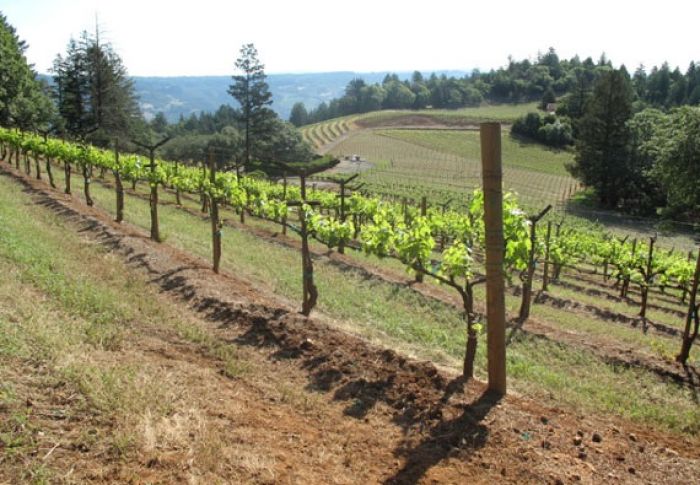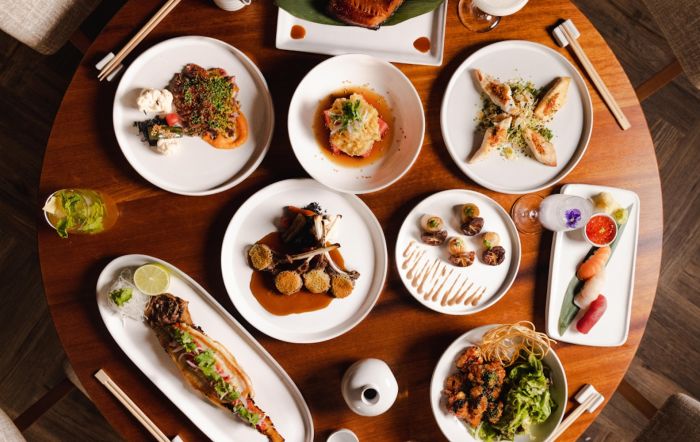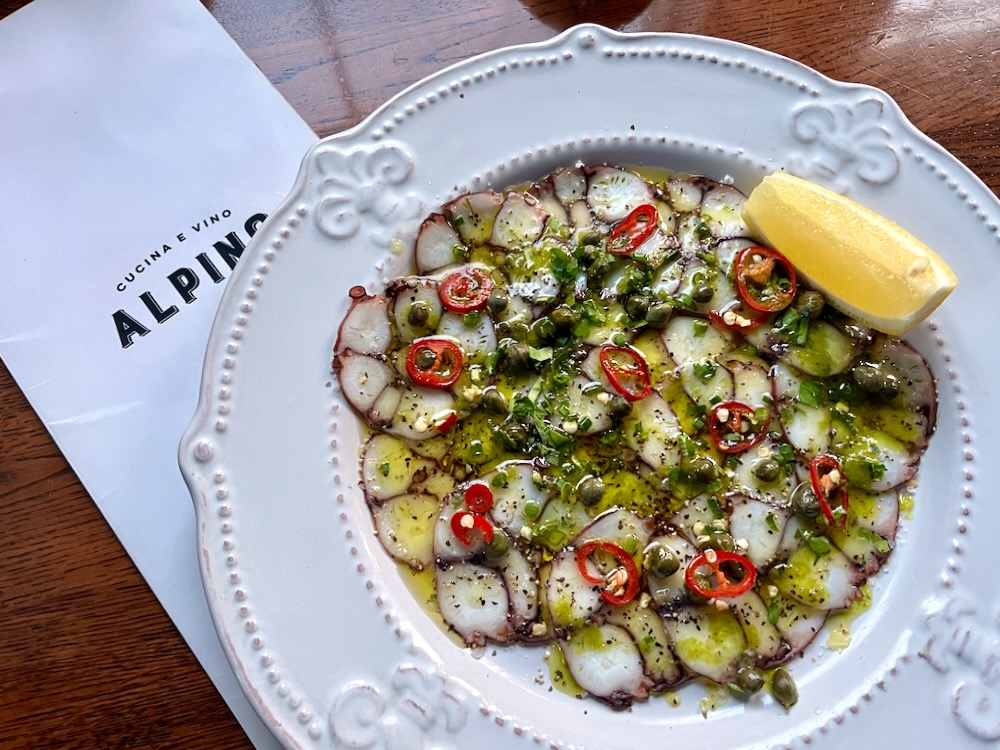
Photo Credit: Stuart Smith
The appreciation of beauty in all of its complexity requires both sense and sensibility. It can be both subjective and objective at the same time, with knowledge and instinct going hand-in-hand. Appreciation without knowledge can be sweet, but fleeting, and appreciation without instinct often appears useless, contrived and without finish.
 Napa Valley is one of those places where subjective and objective meet in the appreciation of the beauty of great wine, where vintners and tasters combine, and daily, both a philosophical and a practical, agrarian aesthetic. In Napa, there are, according to the International Wine Report, over 450 wineries around the 15 AVA (American Viticultural Association) areas - all producing wines that taste a little different, as the soils, climates and the rainfall all differ within these areas. Most of the wineries were started many years ago, some in the 1800s.
Napa Valley is one of those places where subjective and objective meet in the appreciation of the beauty of great wine, where vintners and tasters combine, and daily, both a philosophical and a practical, agrarian aesthetic. In Napa, there are, according to the International Wine Report, over 450 wineries around the 15 AVA (American Viticultural Association) areas - all producing wines that taste a little different, as the soils, climates and the rainfall all differ within these areas. Most of the wineries were started many years ago, some in the 1800s.
And who were those intrepid agriculturists who first planted the grapes. Their names are noted, but their stories and ideas often have not been remembered. It is a rare occasion, then, to encounter the person who actually tilled the soil and planted the first grapes at one multi-awarded artisanal winery in Napa, creating a legacy of taste, combining simplicity and complexity. Stuart Smith is a rara avis, who, with his brother Charles, created the Smith-Madrone winery from the first grapes they planted 41 years ago in 1970.
 I recently interviewed Stuart and wanted to discover if he sensed he was creating something much larger than himself when he pooled money from family and friends, bought the land, and planted the first grapes.
I recently interviewed Stuart and wanted to discover if he sensed he was creating something much larger than himself when he pooled money from family and friends, bought the land, and planted the first grapes.
JustLuxe: In your opinion, what does it take, personality wise and taste wise, to be a good Vintner and Enologist?
Stuart Smith: You need a science background. You have to be passionate about wine. You have to be well-grounded in European wine, the classic European wines. You have to like people.
JL: Do you have that kind of subtle taste differentiators that can tell the difference between a 2006 and a 2008 vintage of Cabernet? Or Chardonnay?
Smith: Almost anybody does. Anybody can tell the difference. Are you asking the difference for a small winery, yes. If you're asking can you tell the differences between '07 and '08 Kendall-Jackson Chardonnay, I'm not sure there's a lot of subtle differences. The larger wineries want consistency of flavor, not difference, however subtle.
JL: What was your vision of the Smith-Madrone legacy when you started planting the grapes in 1970?
Smith: My vision of Smith-Madrone was that we would be a small artisanal kind of European estate-chateau winery. We were in an enviable position as we started the legacy, and we started the winery at the same time. In the late 60s, many people had dreams and no money to plow ahead and start building. It would be very difficult and quite expensive to start an artisanal winery now.
 JL: Your idea created the Smith-Madrone tradition and legacy - few people can say that! What were some of your original ideas about this creation and how have they changed over the years?
JL: Your idea created the Smith-Madrone tradition and legacy - few people can say that! What were some of your original ideas about this creation and how have they changed over the years?
Smith: I believed then as I believe now that fine wine/great wine/good wine can only be made from good grapes and that, like fish, good fish only tastes good when fresh - no amount of technology can make old fish taste good. I believe that the mountains produce the best quality grapes and it's always been my vision that it's our job to get the quality of the grapes into the glass of wine. That's the job of the grape grower and the winemaker.
And, Our fundamental vision has not changed over the years. We still believe that only great grapes make great wine and that small artisanal wineries are the only places that really make quality wines and where the sense of terroir can flourish. The overarching issue is that because our vision hasn't changed, our mission hasn't changed either: our wine quality is still defined by the four major characteristics of greatness: balance, complexity, varietal character and the ephemeral concept of wine-as-art or what the French call terroir.
 JL: What does the nebulous, scalable idea of terroir mean to you?
JL: What does the nebulous, scalable idea of terroir mean to you?
Smith: It is a simple question with a complex answer. In fact, very few Vintners agree on its meaning. But to me, terroir defines a sense of place and time - a combination of climate, soil and site. These essences inherent in the vineyard becomes real through the grape and into the glass. But there is the human element also that can't be overlooked: how the grape grower plants the grapes, where he or she places the rows, in order to take advantage of the climate and rainfall. I like to use this image: terroir is the foundation of the house, whereas the style of the house is the vintage. Yet, terroir is made of so many incalculable things - whether the soil is volcanic, or gravelly, or clay, whether the wine is stored in American or French oak barrels. All of these human and non-human elements make up the terroir of the wine.
JL: How do you see the tradition changing in the next few of years, if at all?
Smith: Our view of wine isn't changing; we think we have a classic view of what wine should be. We do 500 cases of Riesling, 1,000 Chardonnay and 1,500 cases of Cabernet.
JL: One of my wine colleagues once said you know when you taste perfection - it is when your ideas of what a wine should taste like and what it actually tastes likes melds. Do you agree? Do you have any expectation of taste before you taste the wine? Also, can you taste different levels of flavors in the wine?
 Smith: Herein lies the problem with wine. Everyone has his or her own taste buds. Everyone has his or her own perception of what wine should be. My view is that a good wine is a wine that is in balance, so that when you smell a wine, taste confirms the aroma. But then, preferences take over: Do you like a light red candy-cane Pinot Noir, a Cote de Nuits, a Cote de Beaune? Is one better than another, is one inherently better than another? These are questions that keep the wine industry proverbially in flux.
Smith: Herein lies the problem with wine. Everyone has his or her own taste buds. Everyone has his or her own perception of what wine should be. My view is that a good wine is a wine that is in balance, so that when you smell a wine, taste confirms the aroma. But then, preferences take over: Do you like a light red candy-cane Pinot Noir, a Cote de Nuits, a Cote de Beaune? Is one better than another, is one inherently better than another? These are questions that keep the wine industry proverbially in flux.
JL: Do you think that tastes or tongues can be educated over the years to taste more sublime flavors?
Smith: I believe that people can; but it gets back to, are they really interested? do they really love wine? If they really love wine and they're passionate about it, they can educate themselves.
JL: What part farmer and what part connoisseur goes into the life of a Vintner?
Smith: The term "vintner" isn't really the appropriate term. Most of us prefer the term "wine grower" because that implies both the growing of the grapes and the making of the wine. You can't necessarily be a great winemaker without knowing and understanding grape growing. It's really hard to be a great grape grower unless you really understand what it takes to be a great winemaker. So "vintner" implies to me some kind of owner with a hands-off "visit the chateau for the holidays?" type approach and "wine grower" is the hands-on individual who makes it all happen and really is the person responsible for the creation of both the grapes and the wine.
 JL: How do you see the future of Smith-Madrone?
JL: How do you see the future of Smith-Madrone?
Smith: Grape growing and winemaking are the result of thousands of little decisions made daily, weekly, monthly, annually, on how to grow grapes and make wine and that's assuming you have the correct understanding and vision of what wine should be.
We, as winemakers, have been dominated by the large winemakers, who have a tendency to standardize their wines because they want to make money. I feel that in order to make a great wine, the human element that goes into this is an unending passion for our profession, so much so that our jobs are ruled by passion and hope - what we do and what we produce is more of a calling than a job. I like to think this devotion somehow shows up in our wine, how it tastes, how it breathes, how it lives.














